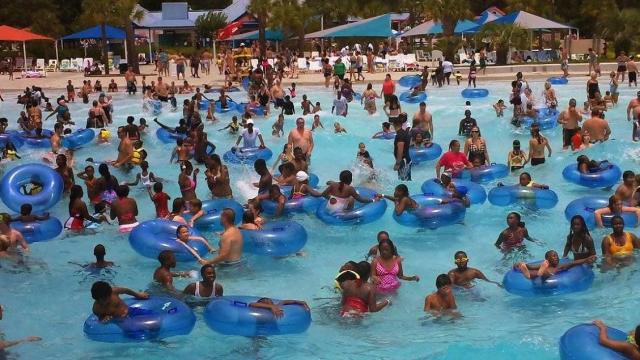Drowning should be easy to spot, right? The victims thrash around, screaming for help as they struggle to stay above water.
Actually, no. That may be what drowning looks like on Baywatch, but real-life drowning is quieter and much harder to spot. In fact, it is often so undramatic that half of kids who drown do so within 22.86m of a parent, and 10% of those drownings happen while a parent is watching.
To help the public learn what drowning really looks like, a group called Lifeguard Rescue has a series of videos called “Spot the Drowning.”
These are real pool rescues — while viewing the footage, see if you can find the swimmer in trouble before the lifeguard jumps in. Sometimes, it’s pretty easy. Other times, it’s terrifyingly not.
What to look for: As drowning protection expert John R. Fletemeyer explains in Aquatics International, the struggle often involves “arms moving rapidly up and down and legs back and forth.”
Lifeguards sometimes call this behaviour “climbing the ladder.” The victim then begins to hyperventilate as their head sinks lower and lower.
Here’s an infographic showing other quieter signs of drowning.
From Lifeguard Rescue: “This same scenario plays out hundreds of times at pools all over the world. A parent or guardian loses track of a child and they wind up in a dangerous situation.
You can see the adult this child is with appears at the ladder next to the child and guard at the end of the video.”
From Lifeguard Rescue: “This child has left their tube and is attempting to swim back towards the shallow end. It doesn’t take long before this child is vertical in the water and gasping for air.
He tries his best to use his arms to push the water down so he can get his mouth and nose above to take a breath, but that’s only sustainable for so long.”
From Lifeguard Rescue: “This is a great example of how someone can be unable to call for help when they are drowning. The guest is desperately trying to get the lifeguard’s attention but is unable to use his voice.
That is terrifying and a good reminder on why so many drownings can go unnoticed.”
Note that the purpose of the videos is to“spread the importance of keeping a close eye on those who can’t swim/weak swimmers in the water,” the group’s Facebook page says, not to train you to become a lifeguard yourself.
If you ever do spot someone having trouble in the water, the U.S. Swim School Association (USSSA) recommends that you “throw, don’t go,” meaning you should toss something like a kick board or beach ball to the person in danger instead of jumping into water yourself.
Also, call 000 or have another person do so. And if you must enter the water to save someone from drowning, it’s best to approach the person from behind to lessen the likelihood that the person will grab on to you and pull you under the water as well.

Comments